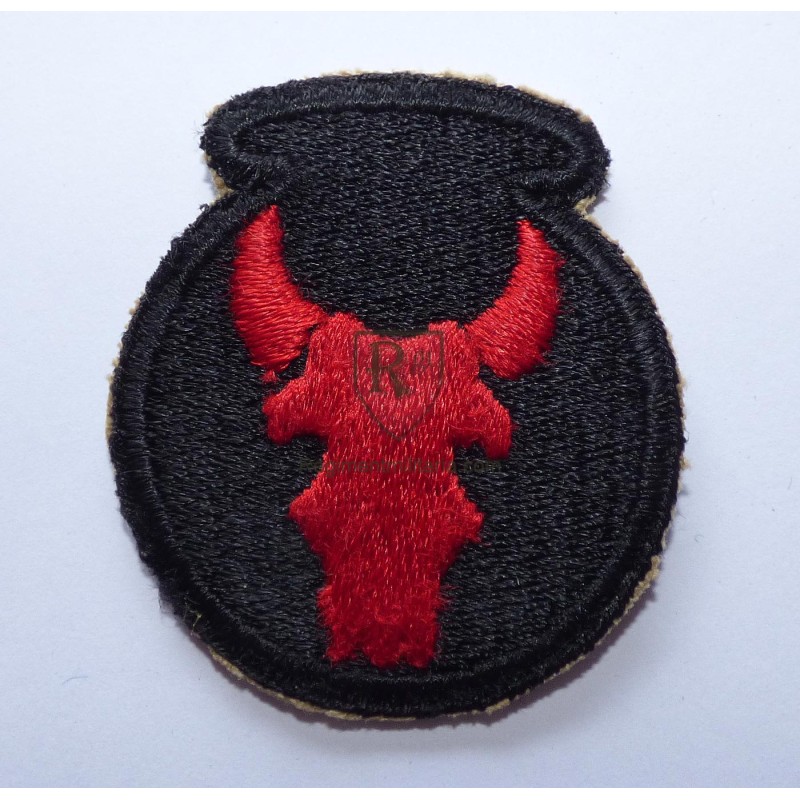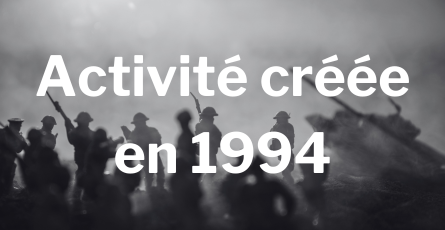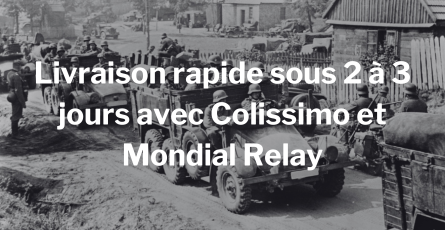
Reference: F1E418
Banner

Banner




34th Infantry Division Patch.
 Garanties sécurité
Garanties sécurité
(à modifier dans le module "Réassurance")
 Politique de livraison
Politique de livraison
(à modifier dans le module "Réassurance")
 Politique retours
Politique retours
(à modifier dans le module "Réassurance")
Genuine WWII era shoulder insignia of the 34th Infantry Division.
On 8 January 1942, the 34th Division was transported by train to Fort Dix, New Jersey to prepare for an early overseas deployment. The first contingent embarked at Brooklyn on 14 January 1942 and left New York the following day. The initial group of 4,508 men disembarked at 12:15 on 26 January 1942 at Dufferin Quay, Belfast, Northern Ireland. They were met by a delegation including the Governor (the Duke of Abercorn), the Prime Minister of Northern Ireland (John Miller Andrews), the Commander of British Troops Northern Ireland (Lieutenant-General Sir Harold Franklyn) and the Secretary of State for Air (Sir Archibald Sinclair).
While in Northern Ireland, Hartle was tasked with organizing an American version of the British Commandos, a group of small "hit and run" forces, and promoted his aide-de-camp, Captain William Orlando Darby to lead the new unit. Darby mustered volunteers, and of the first 500 U.S. Army Rangers, 281 came from the 34th Infantry Division. On May 20, 1942, Hartle was appointed commanding general of V Corps, and Major General Charles Ryder, a distinguished World War I veteran, took command of the 34th Division. The division trained in Northern Ireland until it boarded ships to go to North Africa for Operation Torch, the Allied invasion of North Africa, in November 1942.
The 34th, under the command of Major General Ryder, saw its first combat in French Algeria on 8 November 1942. As part of the Eastern Task Force, which included two brigades of the British 78th Infantry Division, and two British Commando units, they landed at Algiers and captured the port and outlying airfields. Elements of the 34th Division took part in many subsequent engagements in Tunisia during the Allied build-up, including Sened Station, Sidi Bou Zid and Faid Pass, Sbeitla and Fondouk Gap. In April 1943, the division attacked Hill 609, capturing it on 1 May 1943, and then marched through the Chouigui Pass to Tebourba and Ferryville. The Battle of Tunisia was won and the Axis forces surrendered.
Red Bull in the Winter Line at Pantano, Italy - 29 November to 3 December 1943.
The division skipped the Allied invasion of Sicily (Operation Husky) and instead trained intensively for the invasion of the Italian mainland, the main landings being at Salerno (Operation Avalanche) on 9 September 1943, D-Day, to be undertaken by elements of the U.S. Fifth Army, commanded by Lieutenant General Mark Clark. The 151st Field Artillery Battalion entered on D-Day, 9 September, landing at Salerno, while the remainder of the division followed on 25 September. Engaging the enemy at the Calore River on 28 September, the 34th, as part of VI Corps under Major General John Lucas, drove relentlessly north to take Benevento, crossed the winding Volturno three times in October and November, assaulted Monte Patano and took one of its four peaks before being relieved on 9 December. [citation needed]
By January 1944, the division was back on the front lines battering the defenses of the Bernhardt Line. Persevering in fierce fighting along the Mignano Gap, the 34th used herds of goats to clear minefields. [25] The 34th took Monte Trocchio without resistance as the German defenders retreated to the main prepared defenses of the Gustav Line. On 24 January 1944, in the First Battle of Monte Cassino, they crossed the Gari River in the hills behind and attacked the monastery hill that overlooked the town of Monte Cassino. While they came close to capturing the objective, their attacks on the monastery and town ultimately failed. The 34th Infantry Division's performance in the mountains has been called one of the finest feats of arms accomplished by soldiers during the war. The unit suffered casualties of about 80% in the infantry battalions. They were relieved from their positions from 11 to 13 February 1944. Ultimately, it took the combined strength of five Allied infantry divisions to complete what the 34th had accomplished almost single-handedly.
After rest and rehabilitation, the 34th Division landed at the Anzio beachhead on 25 March 1944. The division maintained its defensive positions until the offensive of 23 May, when it broke out of the beachhead, took Cisterna, and rushed toward Civitavecchia and the Italian capital of Rome. After a short rest, the division, now commanded by Major General Charles Bolte, crossed the Cecina River to liberate Livorno on 19 July 1944, and went on to take Monte Belmonte in October during the fighting on the Gothic Line. Digging in south of Bologna for the winter, the 34th led the line opposite the German 65th Infantry Division. The Red Bull Division jumped in as part of the 1945 Spring Offensive into Italy on 15 April 1945, and captured Bologna on 21 April after heavy fighting with the 65th. The pursuit of the routed enemy to the French border was halted on 2 May with the German surrender in Italy and the end of World War II in Europe.
Reference: F1E418
Reference: F1E535
Reference: ALG197
Reference: U2E831
Reference: U2E777
Reference: IND314
Reference: U2E891

34th Infantry Division Patch.
check_circle
check_circle